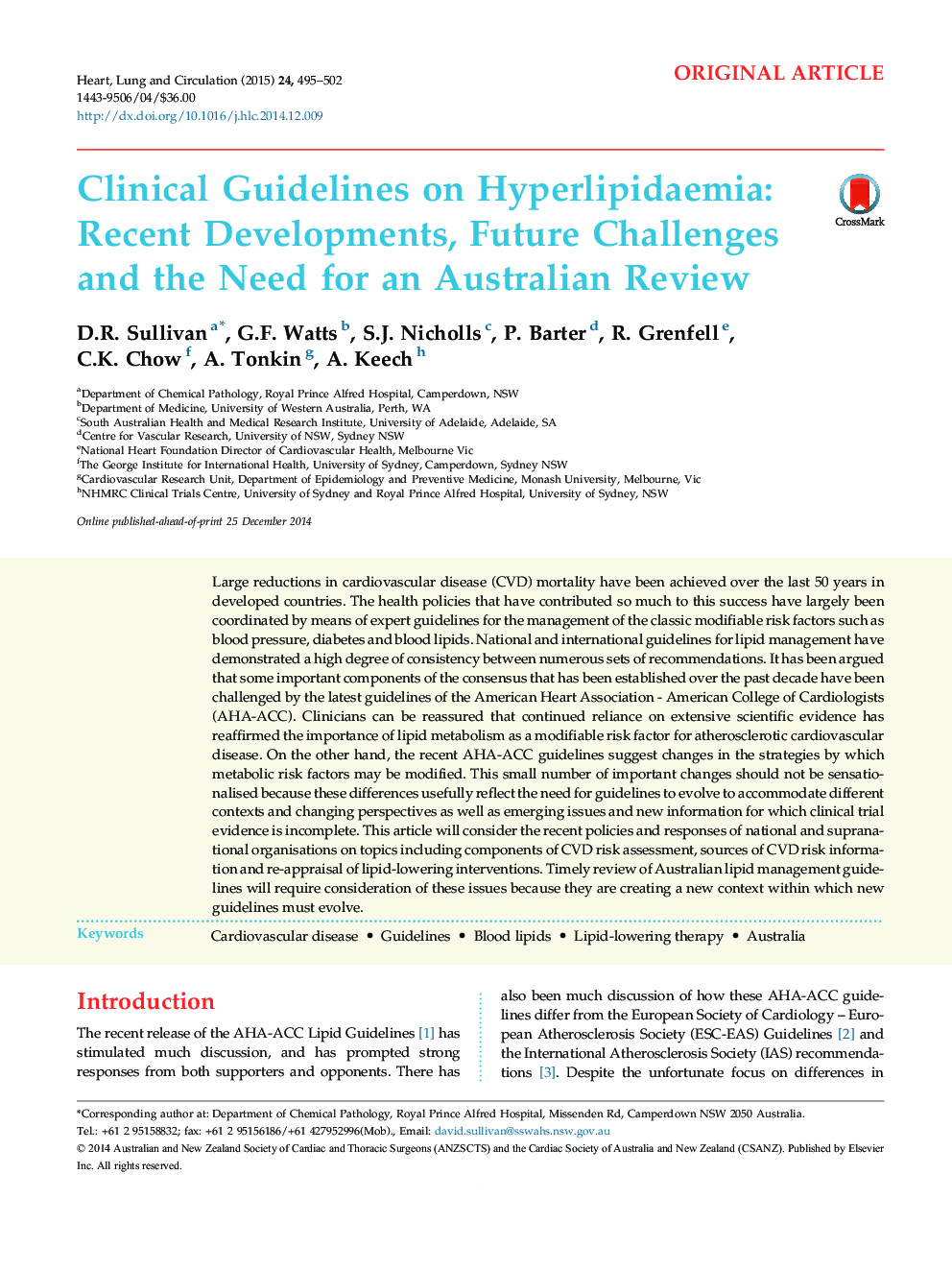| Article ID | Journal | Published Year | Pages | File Type |
|---|---|---|---|---|
| 2917367 | Heart, Lung and Circulation | 2015 | 8 Pages |
Large reductions in cardiovascular disease (CVD) mortality have been achieved over the last 50 years in developed countries. The health policies that have contributed so much to this success have largely been coordinated by means of expert guidelines for the management of the classic modifiable risk factors such as blood pressure, diabetes and blood lipids. National and international guidelines for lipid management have demonstrated a high degree of consistency between numerous sets of recommendations. It has been argued that some important components of the consensus that has been established over the past decade have been challenged by the latest guidelines of the American Heart Association - American College of Cardiologists (AHA-ACC). Clinicians can be reassured that continued reliance on extensive scientific evidence has reaffirmed the importance of lipid metabolism as a modifiable risk factor for atherosclerotic cardiovascular disease. On the other hand, the recent AHA-ACC guidelines suggest changes in the strategies by which metabolic risk factors may be modified. This small number of important changes should not be sensationalised because these differences usefully reflect the need for guidelines to evolve to accommodate different contexts and changing perspectives as well as emerging issues and new information for which clinical trial evidence is incomplete. This article will consider the recent policies and responses of national and supranational organisations on topics including components of CVD risk assessment, sources of CVD risk information and re-appraisal of lipid-lowering interventions. Timely review of Australian lipid management guidelines will require consideration of these issues because they are creating a new context within which new guidelines must evolve.
